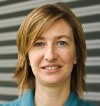by Els Parton, science editor, imec
May 26, 2011 — Nanoelectronics is not only about smaller transistors and more complex chips, it’s about a whole new world of opportunities and solutions to major societal challenges, underlined Luc Van de hove, president and CEO of imec, in his opening keynote at the organization’s annual technology forum.
A world of opportunities lies open for the semiconductor industry in the development of smarter and more user-friendly smartphones — 4.5 billion cell phones are in use today. This small device has altered the way we communicate and interact with our environment; it complements our senses with location information and omniscience. "One of the senses missing today is smell. Why not incorporate an electronic nose in future smart phones to check air quality, food freshness, or to perform alcohol tests," he asked, while showing a recent e-nose prototype based on MEMS.
Another key driver for the industry is the tablet PC. Market analysts predict that by the end of 2011, 54 million tablet PCs will be on the market. As many as 80 different tablet PCs were presented at the Consumer Electronics Show in Las Vegas.
3D TV is another major technology driver for the coming years. It will augment our user experience. The market shows an amazing growth rate of 80.2% with about 78 million devices expected by 2012. "Developments around holographic displays are very important in this field," Van den hove explained. Imec aims to design the ultimate 3D display: a holographic display with a 60-degree diffraction angle and a high-definition visual experience, based on NEMS technology," he noted.
And then there is organic electronics, enabling a whole new world of opportunities for ultralow-cost electronics: smart signage interacting with the environment, smart shopping displays suggesting people what to buy, and flexible light panes to stick anywhere in your home.
But nanoelectronics will also have its impact outside of information and communication technologies — e.g. on the healthcare sector, stated Van den hove. The first wave of health-based devices is on the market today assisting people during sports — however, the real challenge is to provide solutions for the aging population and the associated increasing healthcare cost," he said. "The second wave in health-based devices will be about ambulatory monitoring, bringing the doctor to your home."
And finally, there is the huge potential on the energy market to provide people with renewable energy solutions. "Of all sources of renewable energy, the sun has by far the largest potential," Van den hove said. The aim is to improve the yield of silicon PV systems, bringing down the cost per kilowatt-hour. This can be done by increasing the efficiency of the cells, using less base materials, increasing the lifetime of solar modules and by making the modules "smart" by integrating sensor functionalities. Meanwhile, organic PV will enable entirely new PV-integrated applications thanks to its flexible, low-cost and light-weight nature, he added.
From the multitude of trends and technology highlights that Van den hove showed during his presentation, one thing is clear: a world of opportunities lies ahead of us, both as a consumer and as an industrial player.

